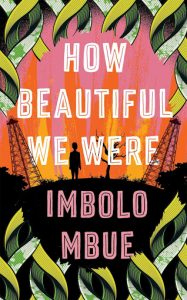ACROSS THE GLOBE, THE most common symptom of middle-class life is not the celebration of consumption, opportunity and professional white-collar jobs, but the anxiety that all of those achievements could disappear. It’s seen in our concerns about college admissions, retirement, taxes and environmental hazards that come with personal costs like cancer and heart disease. But why is anxiety part and parcel of middle-class existence? The answer lies in the beginnings of urbanism 6,000 years ago, when living together in large groups brought new opportunities but also new kinds of risk.
The first cities started as entrepreneurial places where manufacturers and traders could show off innovative wares every day without having to wait for the occasional fair or festival. And customers enjoyed the ability to show off their savoir-faire while engaging in a constant cycle of upgrading and discarding clothing, ornaments and home décor. Their ability to pay was directly tied to the expansion of employment in cities, where big populations and economies of scale came with a need for middle managers in the palaces, factories and temples that kept the city humming.
In the ancient Mesopotamian city of Nippur, for example, written documents reveal a temple inventory of 350,000 sheep and goats. Keeping track of them would have rivaled any modern corporation’s organizational chart! Herders needed oversight to manage the flocks and to ensure that animals stayed healthy and weren’t diverted into a rural stew pot. Someone had to organize information about supply and demand, keep track of annual fluctuations of winter rains and summer droughts that affected grazing lands, and calculate the ancient equivalent of wool futures by reckoning the relative value of leg of lamb today against the need for fiber and leather tomorrow.The World’s Oldest CitiesView All 11 Slides
Trained and educated in accountancy and medicine and animal science and equipped with the skills of writing and record keeping, middle managers in Nippur – and every other ancient city – had to answer for the past, present and future of their decisions. The complexities of each component of the economy were enormous, but the sum total was truly impressive: It included not only the management of sheep and goats, but everything else that came from the surrounding countryside, including vegetables and fruits, grain and fodder, fuel and water, timber and thatch for construction, and raw materials like clay and ore and pigments.
In the world’s first cities, the higher paychecks of middle managers provided more opportunities to acquire consumer goods, but there was stress in that process too. How should a person choose among the myriad new goods that appeared in every shop and bazaar? As the economist Sheena Iyengar reminds us, too many choices result in a kind of consumer paralysis, in which we become overwhelmed by selection. And it’s not just that choices take up money or time; they also leave us vulnerable to dismissive glances from strangers and family: “What did you buy that for?”
Along with objects, ancient urban dwellers with disposable income had other stressful choices to make about buying intangibles like entertainment and education. In Egypt 4,000 years ago, schoolkids studied The Satire of the Trades, which proclaimed how unpleasant it was to be a bricklayer, carpenter or trader, before advising: “Be a scribe, that your limbs may be smooth and your hands languid, that you may go out dressed in white, being exalted so that the courtiers salute you. When a trustworthy person is sought, you are found. No one knows an insignificant person, but finds the one who is skilled.”
People who could record events and calculate risk became valued as brokers of action and reaction, advancing in their careers as the “one who is skilled.” And the feeling was the same throughout ancient cities: Chinese parents and children looked to the famous examination system as a means of moving ahead, while Romans hired tutors for their children not only to learn workaday Latin but also the elevated and lyrical Greek that served as the Mediterranean’s cultivated lingua franca.
In Mesopotamia, the Code of Hammurabi was copied by generations of children who thereby learned that “If a man has given his boat to a boatman for hire and the boatman is careless and sinks the boat or loses it altogether, the boatman shall repay the owner of the boat with another boat,” and “If a man gives silver to another man in a partnership arrangement they shall divide equally in the presence of the god any profit or loss which results.” Much more than the eye-for-an-eye portion that we remember today, the Code encompassed hard-boiled concepts of insurance and contracts interwoven with social expectations of risk and resilience.
The intertwined dynamisms of cities and the middle class are still with us, propelled by the fact that more than 50% of the world’s population now lives in cities. The majority of Americans identifies as middle class today, and middle-income populations are set to double by the year 2030 in sub-Saharan Africa as well as in the booming Asia-Pacific region. Economists and globalization experts put forth the middle class as the arbiters of social stability and the agents of desired changes ranging from increased environmental awareness to the support of cultural institutions to gentrification. Yet one needn’t be a neoliberal apologist to concur that cities are the only places where people can have an abundance of choices for both income and outlays, an engine of middle-class growth in which anxiety is not a flaw but a design feature.




